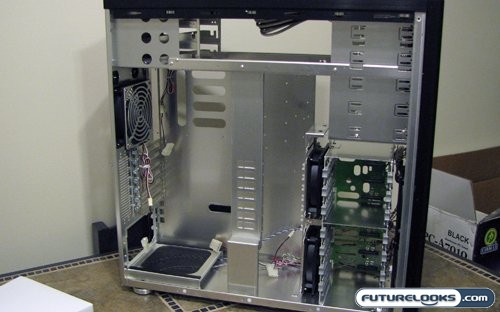
When it comes to computing products aimed at enthusiasts, companies will bend over backwards to come up with an innovative feature, or be the first to add a particular ability to a component that was only found in . . . say . . . the enterprise market. They do this for sales, and name recognition. Of the many facets of the enthusiast computer market, it can hardest to maintain this cycle in the enclosure market. You can only do so much with a simple box, meant to house the actual operating guts of a PC. That’s where a company like Lian Li comes in. They’re known for producing quality cases, with new and interesting features that are often imitated by other companies en masse. Today, we’ve gotten a hold of their PC-A7010 Full ATX Tower Case for a test.
Features and Specifications

The PC-A7010 is a full tower case that for all intents and purposes looks like any other high end aluminum case on the outside. With its clean, almost monolithic appearance the case looks like the kind of quality case you’d expect from Lian Li. It also has a whole host of features that you would expect from a high end enthusiast case, both on the inside and the outside. But there’s one interesting feature that sets this case apart, and it’s outlined in the table below.

Did you catch it? The PC-A7010 has a seven drive SATA RAID rack, with a full backplane. This brings the ability to hot swap hard drives easily to the desktop environment. The case also features a whole lot of space inside, and is able to fully accommodate an E-ATX mobo and extremely long graphics cards. I think I’m getting ahead of myself though. You can check out the product home page for more details on the features, or you can keep reading.
As for pricing, the Lian Li PC-A7010 full tower case can found at many online retailers for between $300 and $330 USD. This definitely puts it in the price range for high end cases, which actually has a surprising large amount of choices already. It also places it right next to well known enthusiast cases like the Silverstone Temjin TJ10. This leaves one wondering how well it stacks up to such cases. We’ll find out in the next few pages, starting with taking a look at the exterior and then working our way inside.
